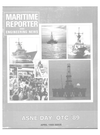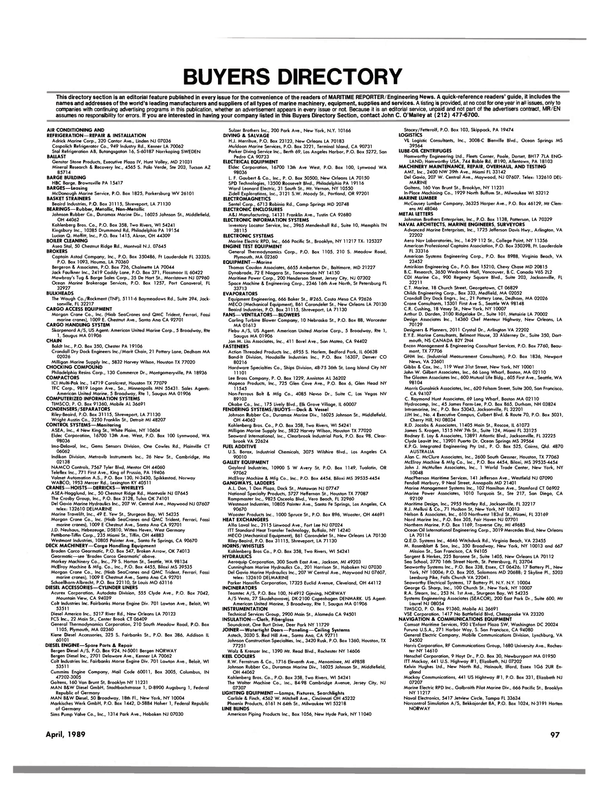
USCG Proposes New Regulations For Small Passenger Vessels
The U.S. Coast Guard recently proposed extensive changes in existing regulations covering small passenger vessels because of new uses for these vessels and advances in design and technology.
The proposed regulations are expected to reduce the number of injuries, lives lost and property damage caused by accidents involving these vessels, primarily by requiring the vessels to carry improved lifesaving equipment, including life raft capacity.
Although newer vessels in this category still meet tonnage requirements for small passenger vessels, they now are larger, made of new materials, carry more passengers, are used for different purposes, and sometimes carry equipment invented since the regulations were written.
There are about 5,000 such vessels operating in the U.S. They include small car-ferries, high-speed passenger ferries, harbor taxis, party and charter fishing boats, tour boats, dinner cruise boats, overnight cruise vessels and offshore oil industry crewboats.
The Coast Guard estimates the average annual cost of the proposed regulations to the small passenger vessels industry at $8.5 million. Existing vessels would have a phase-in period to give them time to add equipment required by the new regulations.
Written comments on the proposed regulations will be accepted until the end of May 1989. The proposed regulations were published in the January 30, 1989 issue of the Federal Register. Copies of the proposed regulations may be obtained by writing to: Commandant (GLRA- 2), U.S. Coast Guard Headquarters, Washington, D.C. 20593- 0001, or by calling (202) 267-1477.
Read USCG Proposes New Regulations For Small Passenger Vessels in Pdf, Flash or Html5 edition of April 1989 Maritime Reporter
Other stories from April 1989 issue
Content
- Balehi Marine Converts Crewboat Into Party Charter Yacht 'Celebrity' page: 4
- New MIG Welding Power Sources Use Single Phase, AC Power page: 5
- Combustion Engineering, Alsthom Plan Joint Boiler Manufacturing Business page: 5
- N e w High-Efficiency Incinerators Introduced By H a m w o r t h y Offer Solution To On-Board Waste page: 6
- Fincantieri Delivers Rail/Car/Passenger Ferry To Italian State Railways page: 6
- Harris Introduces New Remote Control Unit For Its RF-3200 SSB Radio page: 8
- SNAME Opens Membership Doors page: 10
- Blount M a r i n e To Build Ultramodern Dinner Boat page: 11
- Lykes Bros. Acquires Argonaut Line, Parent Company Of Farrell page: 11
- Fjellstrand Wins Order For Two High-Speed Passenger Catamarans page: 12
- Peterson Builders A w a r d ed $ 1 8 5 - M i l l i o n N a v y Contract To Build Three More MCMs page: 12
- Ocean Specialty To Charter U.S.-Flag Product Carriers From OMI, Hvide Shipping page: 14
- Acurex Sea Trials Meter Provides User With Complete Versatility page: 14
- Navy's Newest T-AGOS Christened At Tacoma Boat page: 15
- Literature Available On New Marine Products Made From 'Orkot' page: 15
- USCG Ammends Illegal Drug Policy For Commercial Fishing page: 16
- Comsat Names Taricco Western Region Manager, Maritime Industries Sales page: 16
- Bird-Johnson Wins Contract To Supply T-AO Class Propellers page: 16
- Dr. Daniel True Appointed Senior Research Civil Engineer At NCEL page: 18
- TTS Receives $5.5-Million Contract In Shipyard Modernization page: 18
- Apelco's Color Fishfinder/ Plotter Is Powerhouse In A Small Package page: 18
- Allied Shipbuilders Delivers Caterpillar-Powered Tug page: 20
- JJH Awarded Navy Pact For Design Services For Lead Minehunter Ship page: 21
- New Brochure Outlines Worldwide Capabilities Of Drew Ameroid Marine page: 21
- Furuno Introduces N e w Line Of Medium-Size Radars And N ew V i d e o Sounder W i t h Etched CRT page: 22
- KaMeWa Expands Product Range Through Licensing Agreement page: 22
- OTC '89 SPECIAL PREVIEW page: 25
- Soundcoat Introduces Quilted Barrier Absorber page: 40
- $2.2-Million Conversion Contract Completed For Indian Firm By Keppel page: 42
- Banck Named President, TANO Marine Systems page: 42
- Red Fox Offers Free 20-Page Brochure On Marine Sanitation Systems page: 43
- Meyer Werft Books Order To Convert Car Carrier Into Livestock Carrier page: 46
- Bender Inc. Offers Literature On Electrical Safety Monitoring Systems page: 46
- Hvide Shipping Requests Bids From 14 U.S. Shipyards For Tanker Reconstruction page: 48
- Furuno Introduces New 14-Inch Weatherfax page: 49
- Free StartMaster Literature Describes User Benefits Of Air Starting Systems page: 49
- Detroit Diesel Introduces Three N e w High-Speed Engines page: 50
- 'Naval Engineering Into The Next Century' page: 54
- INTERCON To Build Cranes For U.S. Navy's T-ACS Crane Ship Program page: 62
- Free Pamphlet Details How To Buy DoD Surplus Personal Property page: 64
- JJH Names John Dachos To Management Staff Of Cherry Hill, N.J., Office page: 64
- Flagg Offers Catalog On Complete Line Of Fittings And Flanges page: 66
- Jeffboat To Reopen Shipyard; Will Resume Construction Of Barges And Towboats page: 68
- Furuno Introduces N e w 6-Inch And 8-Inch Dual-Frequency Color V i d e o Sounders page: 69
- Atlantic Marine To Lease ADDSCO Industries Ship Repair Yard In Mobile, Ala. page: 70
- New Cold Welding Repair Material Offered page: 70
- Rados International Designing Cummins-Powered Fireboat For City Of Los Angeles page: 72
- Seacoast Electric Offers Marine Cable And Service Brochures page: 73
- SeaArk Marine Delivers First Five Patrol Boats Of Ten-Vessel Contract page: 74
- Gems Flow Switch Available With Infinite Adjustability To Protect Expensive Equipment page: 74
- Evergreen's $1.2-Billion Order For Containerships May Go To Japanese page: 75
- International Compactor Offers High-Performance Trash Compactors page: 76
- Folk Disc Couplings Feature Fast Assembly, High Reliability page: 77
- Magnavox Introduces Latest In Series Of GPS Data Outputs page: 77
- OSHA Gives Avondale Its Highest Safety Award page: 78
- Aeroquip Offers New Cargo Control Products Bulletin page: 78
- Tradex Marine Equipment Offers Two New Products page: 78
- Trimble Introduces GPS With Integrated Loran And Electronic Charts On CDs page: 78
- New Worldscale Takes Effect—Intertanko Offers Informative Booklet page: 79
- Drydocking At Todd Los Angeles Sets Record For Heaviest Lift On Yard's Syncrolift System page: 80
- Prelube/Postlube Systems Offered By Kim Hotstart page: 80
- BFGoodrich Rivnut Develops Innovative New Floating Fastener page: 81
- GE's M a r i n e Gas Turbine Family Expanding To Satisfy The Markets page: 82
- Dynabrade's Air-Powered Abrasive Belt Machine Converts To Other Tools page: 84
- MARCO-Seattle To Build Two Alaskan Longliners page: 84
- Sperry Marine Rascar Gains Acceptance With Naval Communities page: 85
- N e w W o r l d w i d e Distributor N e t w o rk For EMD Power Products page: 86
- ABB Turbo Systems Formed —Literature Available page: 87
- Raytheon's S N A - 9 1 Integrated Bridge System Is Said To M a k e Significant Contributions To Fuel Savings page: 88
- Raytheon's N e w Professional Loran Is Highly Accurate And Also Exceptionally Easy To Use page: 88
- Hagglunds Marine Reports Brisk Sales For Cranes page: 89
- SPD In Joint Venture With Daeyang Electric page: 89
- Circle Seal Expands Sampling/Bleed Valve Line page: 90
- Marco Seattle Names Fernstrom Executive VP/ Chief Operating Officer page: 90
- Hornbeck And OMI Agree In Principle To Merger page: 90
- Falk Offers Revised Speed Reducer Bulletin page: 91
- USCG Proposes New Regulations For Small Passenger Vessels page: 93
- Resource Technology Expands M a r i n e Trash C o m p a c t o r Line page: 93
- Ingram Barge Company Acquires Additional Barges And Towboats page: 94
- Conrad Industries Delivers Floating Drydock For Use At New Missouri Repair Yard page: 98
- Aiken-Murray Offers Brochure On Chemical And Engineering Services page: 101


